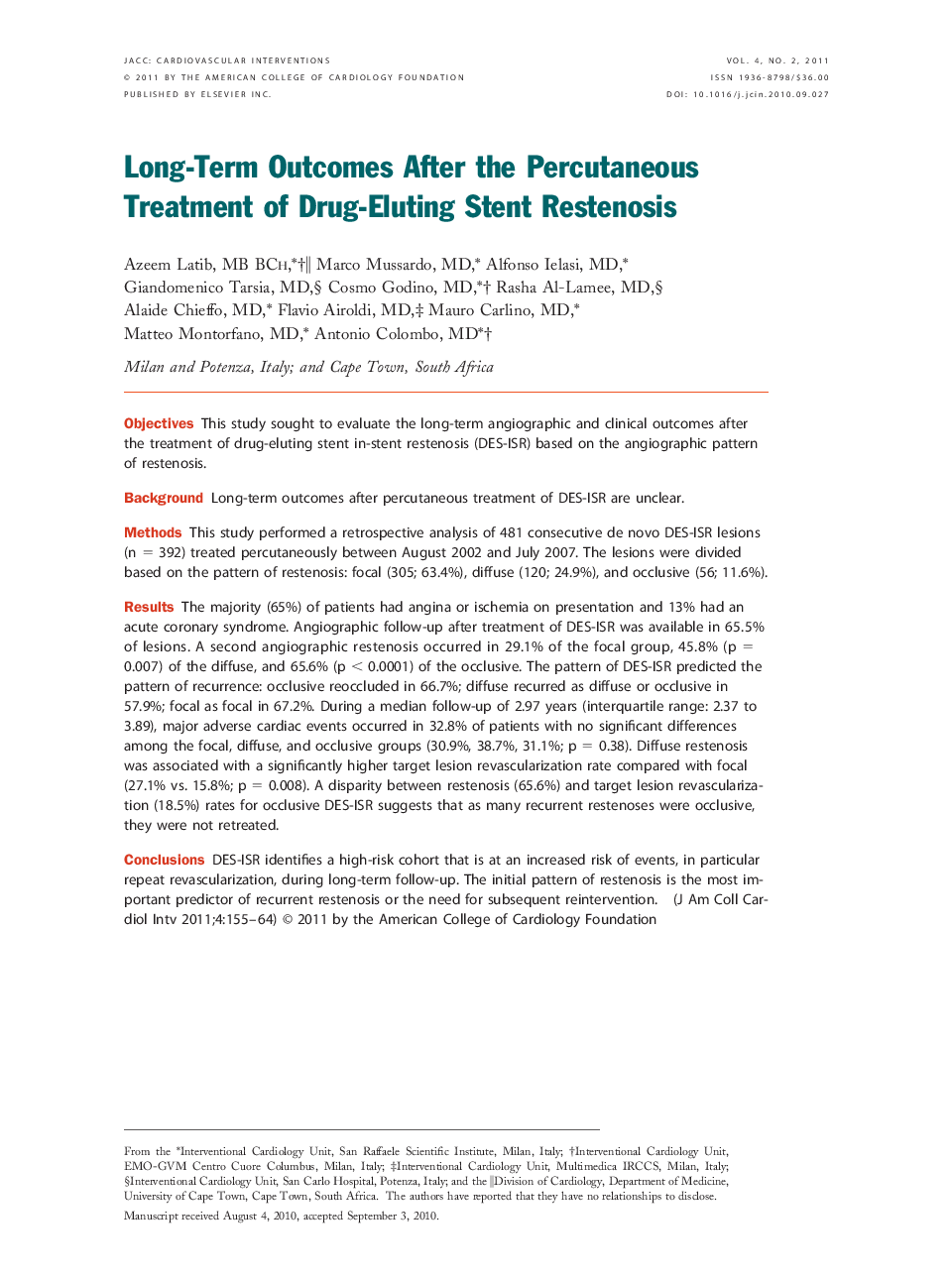| Article ID | Journal | Published Year | Pages | File Type |
|---|---|---|---|---|
| 2941274 | JACC: Cardiovascular Interventions | 2011 | 10 Pages |
ObjectivesThis study sought to evaluate the long-term angiographic and clinical outcomes after the treatment of drug-eluting stent in-stent restenosis (DES-ISR) based on the angiographic pattern of restenosis.BackgroundLong-term outcomes after percutaneous treatment of DES-ISR are unclear.MethodsThis study performed a retrospective analysis of 481 consecutive de novo DES-ISR lesions (n = 392) treated percutaneously between August 2002 and July 2007. The lesions were divided based on the pattern of restenosis: focal (305; 63.4%), diffuse (120; 24.9%), and occlusive (56; 11.6%).ResultsThe majority (65%) of patients had angina or ischemia on presentation and 13% had an acute coronary syndrome. Angiographic follow-up after treatment of DES-ISR was available in 65.5% of lesions. A second angiographic restenosis occurred in 29.1% of the focal group, 45.8% (p = 0.007) of the diffuse, and 65.6% (p < 0.0001) of the occlusive. The pattern of DES-ISR predicted the pattern of recurrence: occlusive reoccluded in 66.7%; diffuse recurred as diffuse or occlusive in 57.9%; focal as focal in 67.2%. During a median follow-up of 2.97 years (interquartile range: 2.37 to 3.89), major adverse cardiac events occurred in 32.8% of patients with no significant differences among the focal, diffuse, and occlusive groups (30.9%, 38.7%, 31.1%; p = 0.38). Diffuse restenosis was associated with a significantly higher target lesion revascularization rate compared with focal (27.1% vs. 15.8%; p = 0.008). A disparity between restenosis (65.6%) and target lesion revascularization (18.5%) rates for occlusive DES-ISR suggests that as many recurrent restenoses were occlusive, they were not retreated.ConclusionsDES-ISR identifies a high-risk cohort that is at an increased risk of events, in particular repeat revascularization, during long-term follow-up. The initial pattern of restenosis is the most important predictor of recurrent restenosis or the need for subsequent reintervention.
